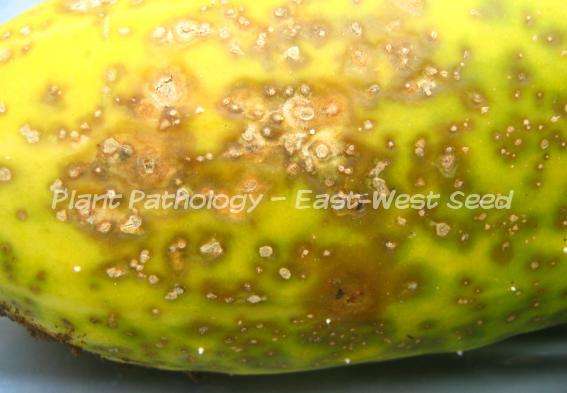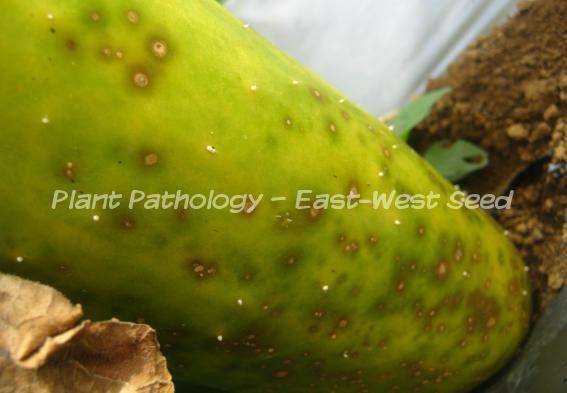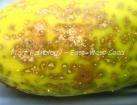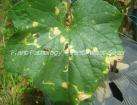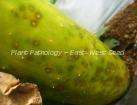Causal Agent:
Fungus (Colletotrichum sp.)
| Characteristic Symptoms: | |
 |
Affected leaves have brown necrotic spots with yellow halo and have a tendency to elongate along the veins. |
 |
Affected stems initially have numerous oily spots, which elongate and turn into yellowish gray sunken lesions that are sometimes covered with pinkish spore masses. |
 |
Fruits have oval, sunken or depressed, dark gray to brownish black lesions. |
| Conditions for Disease Development: | |
 |
The pathogen survives between crops on infected plant residue or infected volunteer plants and can be carried on seed harvested from infected fruit. |
 |
Conidia/spores produced on foliage are disseminated by wind, rain splashes, tools/implements and field workers. |
| Management and Control: | |
 |
Maintain good field sanitation (i.e. early removal of infected plant/plant parts).
|
 |
Avoid prolonged moisture.
|
 |
Crop rotations for 2-3 years may help reduce inoculum in the soil. |
 |
Use pathogen-free/certified seeds. |
 |
Spray with chemical fungicides like copper-based fungicides (e.g. Cupravit®, Super BlueⓇ, Vitigran blueⓇ, FunguranⓇ, KocideⓇ, Hydroxide superⓇ), difenoconazole (e.g. ScoreⓇ, MontanaⓇ, PursueⓇ, BashⓇ), difenoconazole+proficonazole (e.g. ArmureⓇ), Pyraclostrobin (e.g. Cabrio 25 ECⓇ), Bacillus subtilis strain QST 713 (e.g. Serenade®, Virtuoso®) and azoxystrobin (Amistar®, MiradorⓇ, RobatoⓇ). |
| References: | |
| Compendium of Cucurbit Diseases (1996) by the American Phytopathological Society | |
To view other diseases, click here.
Need more help? Ask the Doctor.



